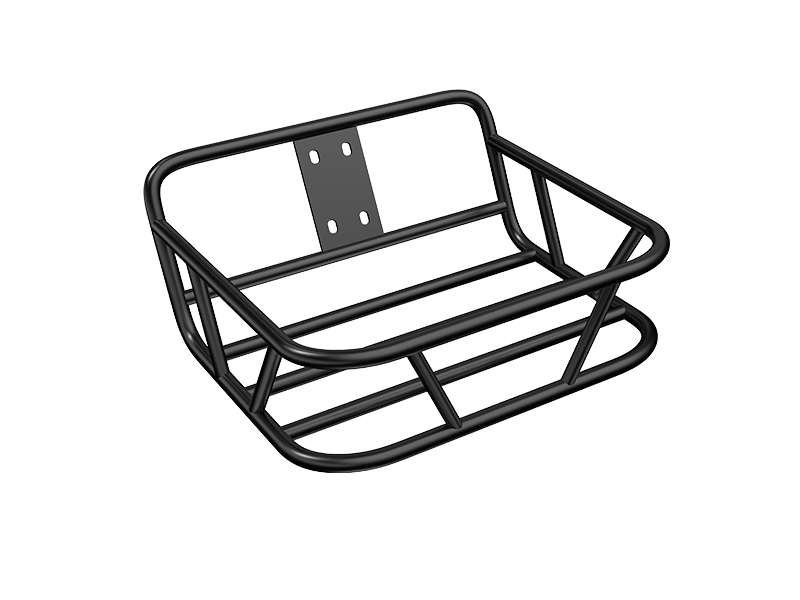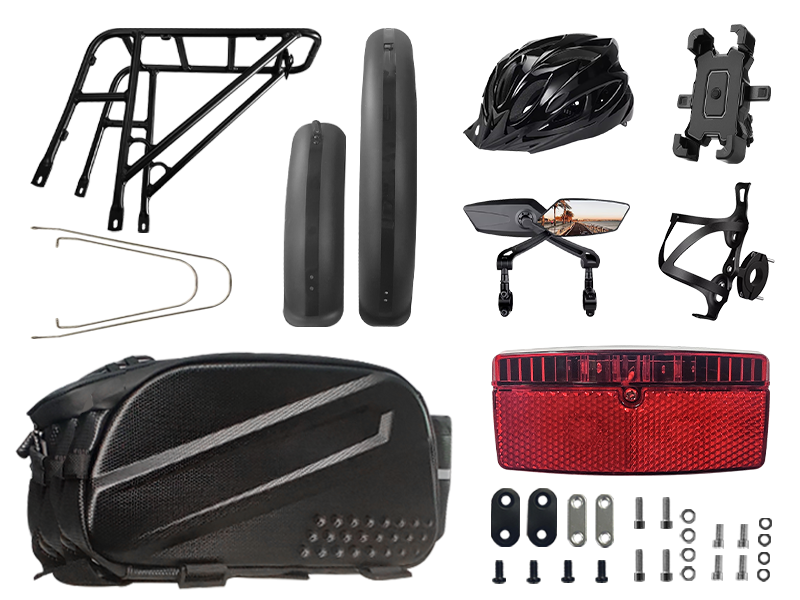FREESKY Batteries: UL-2271 Certification and Our Commitment to Your Safety
Apr 07, 2025
At FREESKY, we believe that true freedom on the road begins with uncompromising safety. This philosophy drives every innovation we create, and our e-bike batteries are no exception. With the globally recognized UL-2271 safety certification at their core, FREESKY batteries are engineered to protect, perform, and empower your rides—no matter where they take you.
Why UL-2271 Certification Matters
The UL-2271 standard is not just a badge—it’s a promise. This rigorous certification, mandated for micromobility devices, subjects batteries to extreme real-world scenarios:
Simulated short circuits and overcharging to prevent fire risks.
High-temperature stress tests to ensure stability in demanding conditions.
Impact and vibration resistance to guarantee structural integrity.
Only batteries that pass these exhaustive trials earn the UL-2271 mark. For FREESKY, meeting this standard is non-negotiable. It’s our way of ensuring that every ride you take is shielded from unseen dangers.
Safety by Design: The FREESKY Difference
Our commitment to safety goes beyond certifications. Every FREESKY battery integrates dual safeguards:
Advanced Battery Architecture: High-density cells optimized for efficiency and thermal management, minimizing risk even during peak performance.
Smart BMS (Battery Management System): Constantly monitors voltage, temperature, and current to prevent overloads and balance energy distribution.
This combination doesn’t just meet industry standards—it redefines them. We design batteries that are as resilient as they are powerful, because your safety is the foundation of every innovation we pursue.
Built for Real Riders, Tested for Real Life
Whether you’re weaving through city traffic or exploring off-grid trails, FREESKY batteries are built to adapt. The UL-2271 certification ensures reliability in unpredictable environments, while our technology delivers:
Longer rides: Consistent power output for extended adventures.
Zero compromises: No safety shortcuts, even at maximum performance.
For urban commuters, it’s peace of mind. For adventurers, it’s confidence to push boundaries. For everyone, it’s freedom without fear.
Why Choose FREESKY?
In a market flooded with claims, FREESKY stands apart. We don’t just sell batteries—we deliver a safety-first legacy backed by:
Transparency: Clear certification details and testing benchmarks.
Innovation: Cutting-edge tech that prioritizes protection.
Trust: A brand that values your safety as much as you do.
Ride Safer. Ride Farther.With FREESKY’s UL-2271 certified batteries, every journey is powered by security and precision. Explore our range today and experience the confidence that comes with engineering excellence.
Read More
Electric Fat Tire Bikes: The Ultimate Long-Distance Adventure Machines
Mar 28, 2025
When it comes to exploring the great outdoors, electric fat tire bikes have carved out a unique niche. With their rugged design, oversized tires, and powerful motors, these bikes are built to handle everything from sandy beaches to snowy trails. But one question lingers for adventure enthusiasts: Can these beastly machines truly conquer long-distance journeys? Let’s dive into why fat tire e-bikes might just be your ultimate companion for epic rides.
The Rise of Fat Tire E-Bikes: Built for the Unconventional
Fat tire electric bikes aren’t just a novelty—they’re engineered for resilience. Their 4- to 5-inch-wide tires provide unmatched stability and traction, allowing riders to glide over terrain that would stall traditional bikes. Paired with robust mid-drive or hub motors and long-lasting batteries, these bikes are redefining what’s possible for off-grid exploration. But does this translate to endurance over miles?
Key Features That Make Long-Distance Rides Possible
Battery Power & RangeModern fat tire e-bikes are equipped with high-capacity lithium-ion batteries (500Wh to 1,000Wh+) that can deliver 40–80+ miles on a single charge, depending on riding mode and terrain. For extended trips, many models support dual-battery setups or portable chargers, ensuring you’re never stranded.
Motor EfficiencyMid-drive motors, common in premium fat tire e-bikes, optimize power distribution and adapt seamlessly to shifting terrains. This efficiency reduces battery drain, making long rides more sustainable.
Comfort & StabilityFat tires act as natural shock absorbers, smoothing out bumps on rocky trails or gravel roads. Combined with ergonomic saddles and adjustable suspension forks, these bikes minimize fatigue—a game-changer for multi-day adventures.
All-Terrain VersatilityWhether you’re crossing desert dunes, navigating forest trails, or pedaling through mud, fat tires ensure consistent performance. This adaptability means fewer detours and more direct routes, saving time and energy.
Challenges (and Solutions) for Long-Distance Riders
While fat tire e-bikes excel in many areas, long-distance adventures require thoughtful planning:
Weight: Fat tire e-bikes are heavier (60–80 lbs) due to their robust frames and components. However, pedal-assist modes and torque sensors offset this, making climbs and acceleration feel effortless.
Aerodynamics: The wide tires create more drag at high speeds. Solution? Stick to moderate speeds (15–20 mph) to conserve battery and enjoy the scenery.
Charging Infrastructure: Remote routes may lack charging stations. Pack a solar charger, opt for a dual-battery system, or plan stops near campgrounds/cafés with outlets.
Real-World Success Stories
Adventurers worldwide are proving fat tire e-bikes’ long-distance prowess:
Desert Expeditions: Riders have traversed the Mojave Desert using fat tire e-bikes, leveraging their traction on sand and extended battery life to cover 50+ miles daily.
Snowy Trails: In Nordic regions, riders tackle multi-day winter trails, where fat tires float over snow and motors combat harsh winds.
Bikepacking: From the Rockies to the Alps, bikepackers pair fat tire e-bikes with lightweight gear, using eco-mode to stretch battery life across days.
Tips for Planning Your Long-Distance Fat Tire E-Bike Adventure
Test Your Setup: Do shorter shakedown rides to fine-tune tire pressure, battery usage, and gear loadouts.
Prioritize Range: Use eco mode on flats, reserve higher assist levels for climbs, and keep tires properly inflated.
Pack Smart: Invest in waterproof panniers, spare tubes, and a compact repair kit.
Know Your Route: Use GPS apps to locate charging points and terrain-specific trails.
Conclusion: The Future of Adventure Riding is Fat & Electric
Electric fat tire bikes aren’t just surviving long-distance adventures—they’re thriving. With advancements in battery tech, motor efficiency, and durable components, these bikes empower riders to go farther, explore wilder landscapes, and redefine their limits. Whether you’re chasing horizons on a weekend getaway or embarking on a cross-country odyssey, a fat tire e-bike turns "impossible" into "unforgettable."
Ready to take on your next big adventure? Explore our range of high-performance fat tire electric bikes designed to go the distance—wherever your journey leads.
Read More
Warrior Pro M-530: The 2000W eBike Built for Epic Journeys and Unmatched Comfort
Nov 22, 2024
Ready to elevate your riding experience? The Warrior Pro M-530 is your ultimate companion for thrilling adventures and everyday exploration. Equipped with cutting-edge technology and designed for peak performance, this electric bike sets a new standard for versatility, power, and comfort.
Dual Motor Power: 2000W of Pure Performance
With two 1000W hub motors, one in the front and one in the rear, the Warrior Pro M-530 offers unparalleled power and control. Switch between single and dual motors with an intuitive handle button, letting you tailor your ride to any terrain. Whether conquering steep hills or cruising smoothly on city streets, this bike is built to perform.
Ultimate Comfort with Dual Suspension
Rough trails? No problem. The Warrior Pro features a dual suspension system with a lockable and adjustable front hydraulic downhill fork and rear suspension. Experience a smoother ride and superior handling, no matter how challenging the path ahead.
Extended Range with SAMSUNG Battery Technology
The Warrior Pro is powered by a 48V 25Ah SAMSUNG lithium battery, equipped with the latest Battery Management System (BMS) for optimal performance and safety. Enjoy:
50-85 miles per charge on a single motor
30-50 miles on dual motors
With a massive 1200WH capacity, you’re ready for epic journeys. Plus, recharging takes only 6 hours, so you’ll be back on the road in no time.
Speed and Control
Hit speeds of up to 38 MPH, making every commute or adventure an exhilarating experience. Combined with the advanced suspension and dual motors, you’ll have the confidence to push boundaries.
Smart Features for a Seamless Experience
The Warrior Pro M-530 goes beyond performance with cutting-edge smart features:
NFC Unlock: Say goodbye to keys and unlock your bike with a simple tap.
Bluetooth Connectivity: Sync with the mobile app to access advanced settings, track ride data, and more.
Smart Display: Stay informed with real-time data, from speed and battery life to motor status, ensuring you’re always in control.
Why Choose the Warrior Pro M-530?
This e-bike combines robust performance, innovative features, and unparalleled comfort. Whether you’re exploring off-road trails, speeding through your commute, or taking a leisurely ride, the Warrior Pro adapts to your needs.
Get ready to explore without limits. The Warrior Pro M-530 isn’t just an electric bike—it’s your ticket to freedom.
Read More













